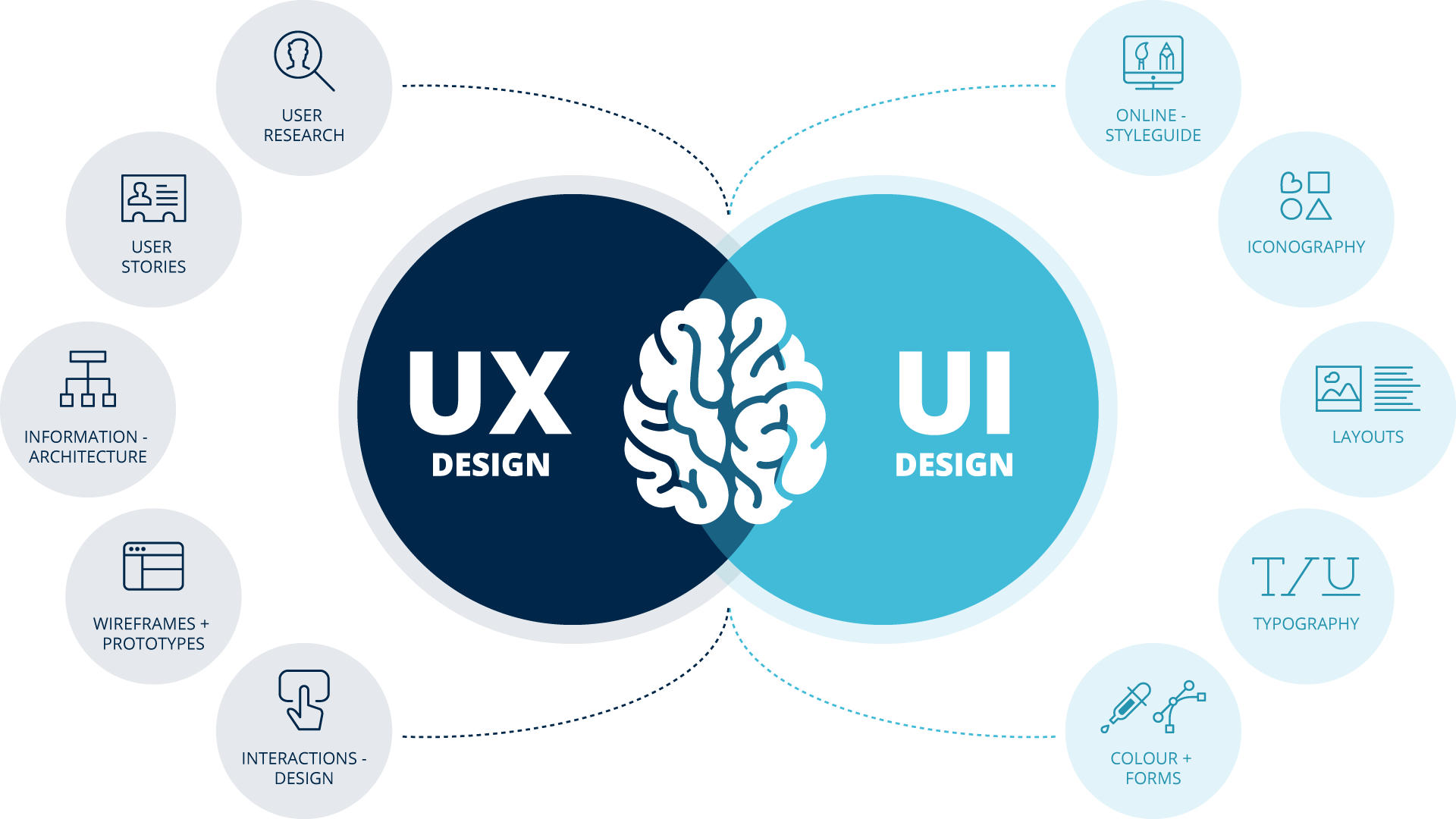The Importance of UX/UI Design in E-Commerce Web Development
The Importance of UX/UI Design in e-commerce lies in its ability to enhance user experience, boost engagement, and drive conversions effectively.

In today’s fast-paced digital marketplace, e-commerce has become a cornerstone of modern business. However, simply having an online store is not enough to thrive in this competitive landscape. A website’s success hinges significantly on UX/UI design in e-commerce web development. The quality of user experience (UX) and user interface (UI) directly impacts customer satisfaction, engagement, and conversion rates, making them critical aspects of web development.
What is UX/UI Design?
UX design focuses on crafting a seamless and enjoyable experience for users as they interact with a website. This involves understanding user needs, ensuring ease of navigation, and optimizing functionality. On the other hand, UI design pertains to the visual elements of the website, including layout, color schemes, typography, and interactive features. Together, they form the backbone of an intuitive and visually appealing e-commerce site.
Why is UX/UI Design Essential for E-Commerce?
1. First Impressions Matter
Your website is often the first interaction a customer has with your brand. A well-designed UI creates a positive first impression, establishing trust and professionalism. Clean layouts, attractive visuals, and intuitive navigation are essential to encourage users to stay on your site longer.
2. Enhances User Experience
A seamless UX ensures that users can easily find what they’re looking for. Whether it’s a product page, shopping cart, or customer support, a well-structured website reduces frustration and makes the shopping process enjoyable.
3. Increases Conversion Rates
A poorly designed website can deter potential customers from making a purchase. Streamlined UX/UI design eliminates friction points, simplifies the checkout process, and ensures calls-to-action (CTAs) are prominent and compelling, thereby boosting conversions.
Key Elements of Effective UX/UI Design in E-Commerce

1. Mobile-First Design
With mobile commerce on the rise, responsive design is non-negotiable. Websites must perform seamlessly on devices of all sizes to cater to a diverse audience.
2. Intuitive Navigation
A clear and logical navigation structure helps users find products effortlessly. Implementing breadcrumb trails, search bars, and categorized menus enhances usability.
3. Engaging Visuals and Branding
High-quality images, consistent branding, and visually appealing layouts contribute to a memorable shopping experience. Additionally, well-thought-out color schemes evoke emotions that align with your brand message.
4. Fast Loading Speeds
A delay in page load time can cost you customers. Optimized UX/UI design ensures your website is lightweight and fast, reducing bounce rates.
5. Secure and Transparent Checkout
A clutter-free and secure checkout process builds trust. Displaying security badges and offering multiple payment options enhance customer confidence.
6. Accessibility for All
Inclusive design ensures that your website is usable by people with disabilities. Features like alt text for images, keyboard navigation, and readable fonts cater to a broader audience.
How UX/UI Impacts E-Commerce Metrics
- Bounce Rate: Poor navigation or unattractive visuals can cause users to leave your site quickly. Good UX/UI minimizes bounce rates by keeping users engaged.
- Customer Retention: A satisfying shopping experience increases the likelihood of repeat visits and loyalty.
- Average Order Value (AOV): Strategic placement of related products and promotional banners can encourage users to add more items to their cart.
- SEO Performance: Search engines prioritize websites with better usability and faster loading times. Enhanced UX/UI boosts search rankings, driving organic traffic.

Examples of Great UX/UI in E-Commerce
Amazon
Amazon’s success lies in its simplicity. Features like one-click ordering, personalized recommendations, and an intuitive search bar make shopping effortless.
Apple
Apple’s e-commerce site is a masterclass in minimalist design. High-quality visuals, concise product descriptions, and seamless navigation reflect the brand’s premium identity.
Etsy
Etsy excels in creating a community-driven experience. Its user-friendly design allows customers to explore unique, handcrafted items with ease.
Conclusion
The importance of UX/UI design in e-commerce web development cannot be overstated. It serves as the bridge between your business and your customers, shaping their perception of your brand and influencing their purchasing decisions. By prioritizing responsive design, seamless navigation, and visually engaging elements, you can create an e-commerce platform that not only meets but exceeds customer expectations.
Investing in exceptional UX/UI design is not just about aesthetics—it’s about driving growth, improving customer satisfaction, and staying ahead in a fiercely competitive market.



